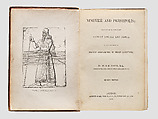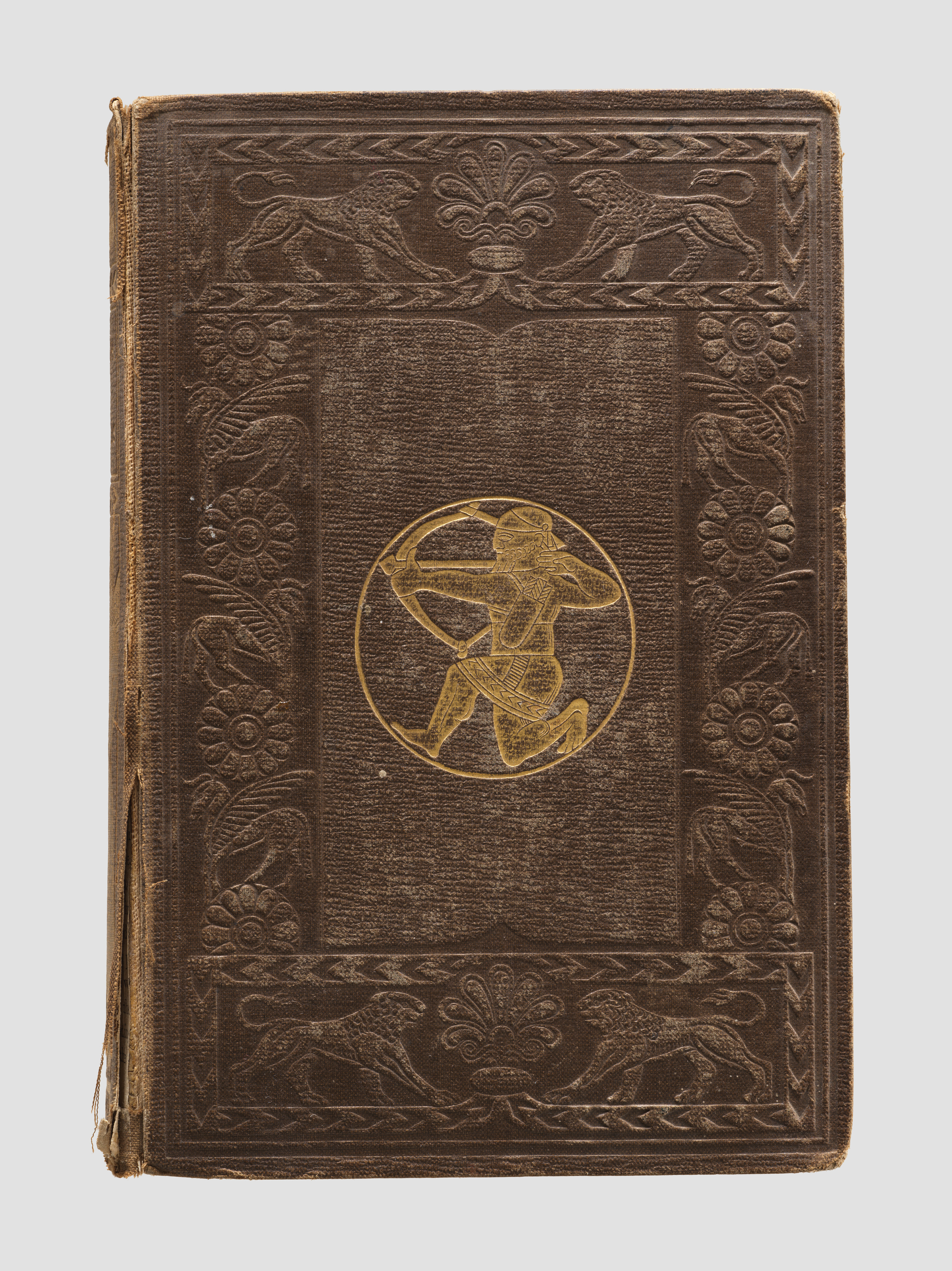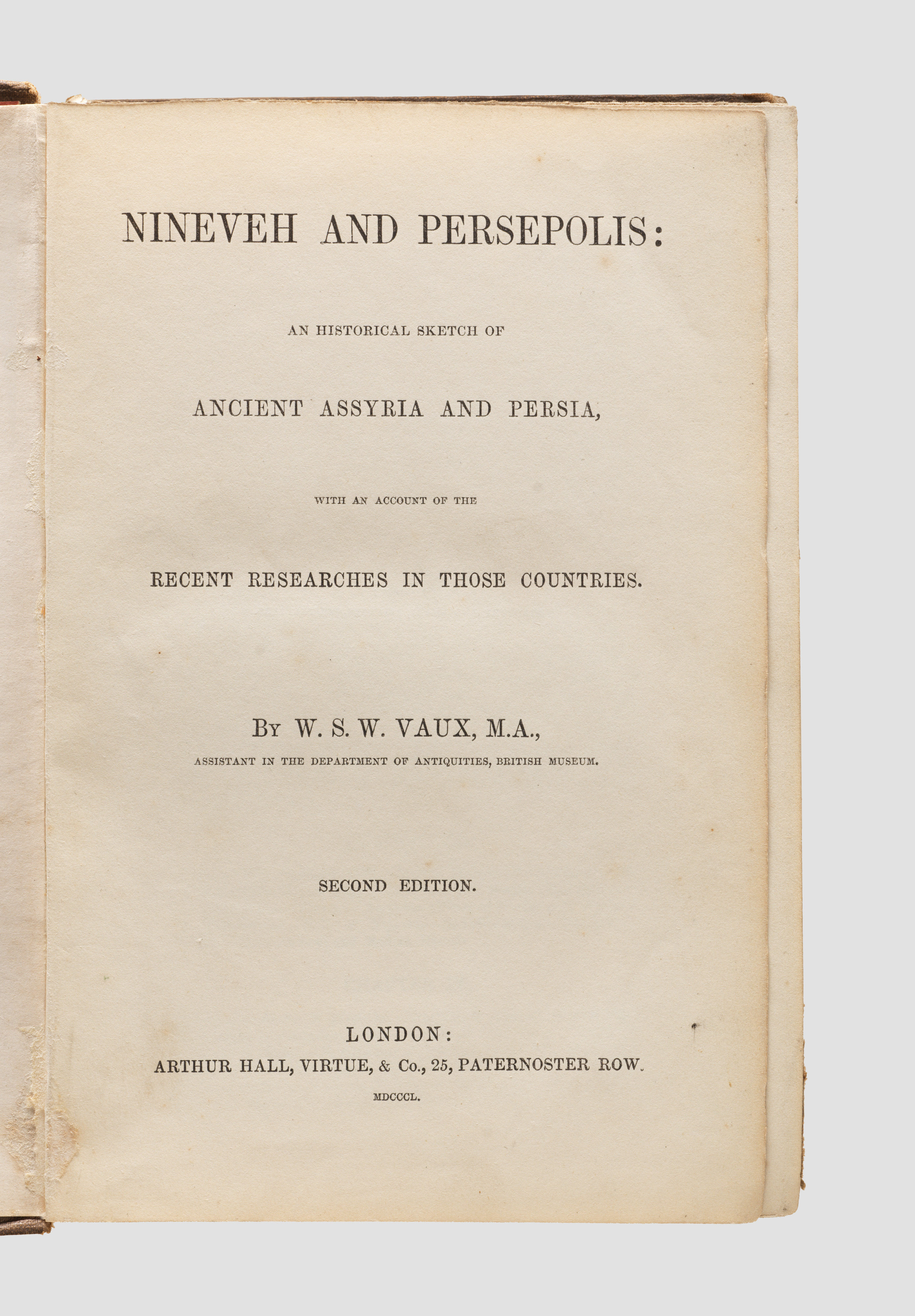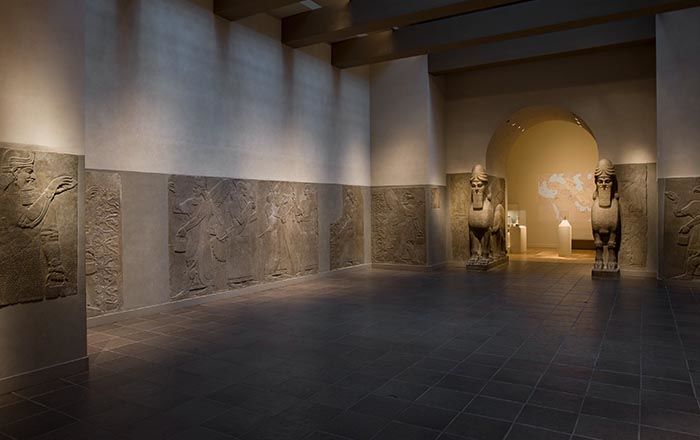Nineveh and Persepolis: An Historical Sketch of Ancient Assyria and Persia with an Account of the Recent Discoveries in Those Countries
Not on view
Following the excavation of Assyrian palaces in the mid-nineteenth century, ancient Mesopotamian imagery began to be used in European decorative arts, including jewelry and ceramics. Publicity in the form of news coverage and popular books around the excavations, removal of many sculptures from sites in northern Iraq to England and France, and public spectacles such as the reconstructed ‘Nineveh Court’ in the Crystal Palace at Sydenham, London, fostered a fascination with Assyria and Assyrian art among the Victorian public.
The antiquarian and numismatist William Vaux, at that time an assistant keeper (curator) in the Department of Antiquities at the British Museum, wrote this popular book, intended as an accessible account, when the discoveries were still very recent: the excavators’ own first major publications had appeared only the previous year, 1849, while the first major translation of a cuneiform inscription, the Old Persian version of Darius I’s monumental inscription at Bisitun in western Iran, was published in two parts in 1846 and 1849. In Nineveh and Persepolis, Vaux aimed to summarize not only the new discoveries but also the accounts of previous travelers in Mesopotamia such as Claudius Rich and Robert Ker Porter, and to consider these alongside long familiar biblical and classical sources. From Vaux’s perspective, it appeared that the antiquarian discoveries served only to support the biblical text; later, divergences in the sources would lead to religious disputes, but at the time this view was both prevalent and a major factor in public interest in the discoveries.
This image cannot be enlarged, viewed at full screen, or downloaded.
This artwork is meant to be viewed from right to left. Scroll left to view more.








